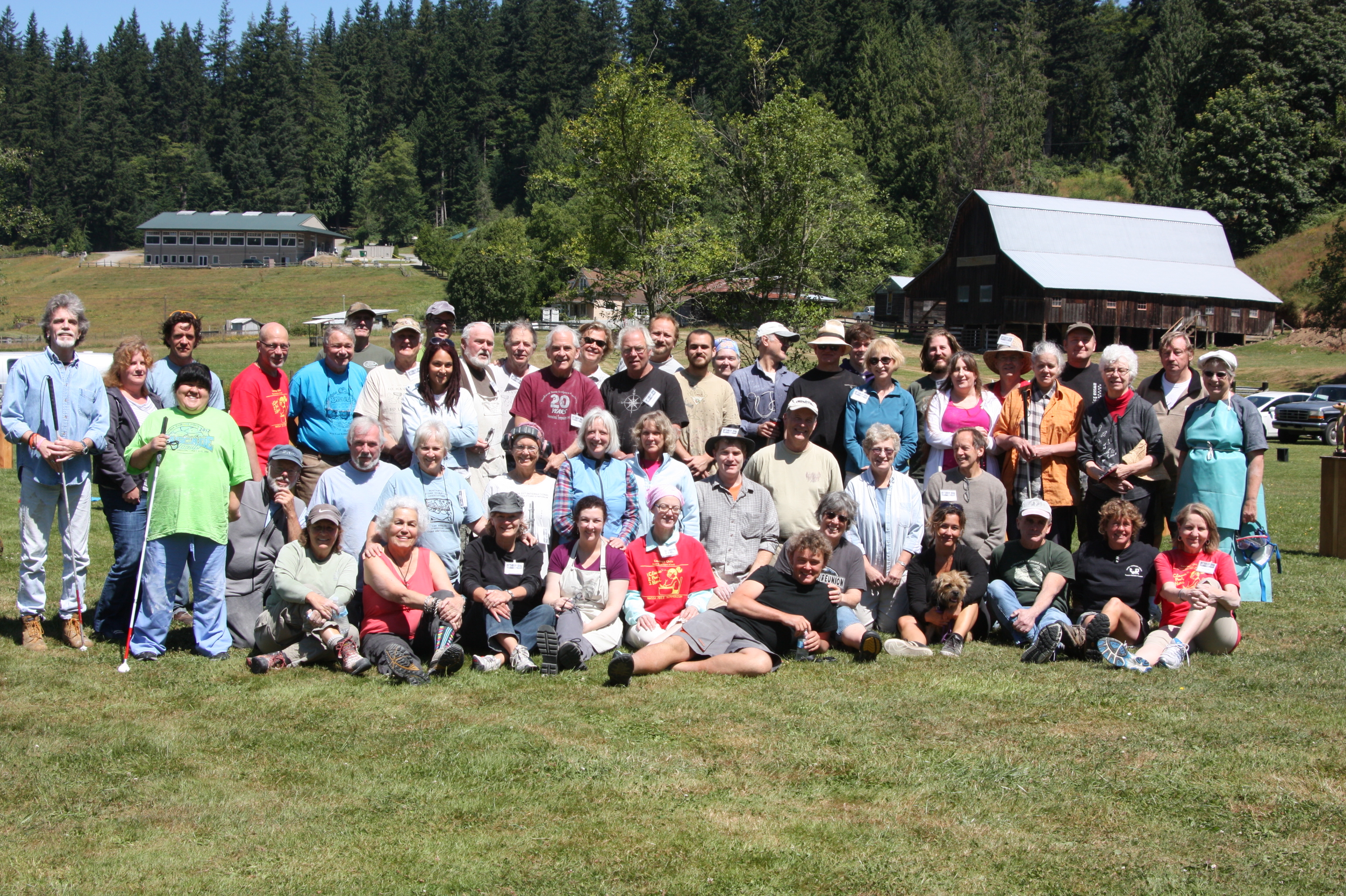I’ve Never Carved a Stone! What can I expect as a beginner?
Impressions of NWSSA's Stone Sculpture Symposiums by Pat Barton, Irene Blomberg & Berta Geller
Beginner Training:
Beginner Work Area: The beginner work area is set up at the edge of camp, thus allowing the teachers a semi-quiet space to teach. Two large canopies house the work area, with tarps on the ground to catch stone chips and dust. The tents provide protection from both the sun and rain. Tables, benches and stools are provided to store tools and carve comfortably. The work area has electrical power, compressed air, and water. Students pick up and clean their work area at the end of each day. 
“As one fairly new to stone sculpting, I found the beginner’s tent to be a place of great support and encouragement for exploring my creativity with stone.” Eirene Blomberg
Full Time Instructors: Tamara Buchanan and Ruth Mueseler are both experienced stone sculptors. Tamara has been sculpting stone for over 25 years, and teaches at her studio on Lopez Island for the past 10 years. Ruth, from Bellingham, comes highly recommended by her former students for her thoughtful and respectful manner towards those wanting to learn stone.
Do I need to bring a stone with me?
No, An 8”x20”x4” (approx.) piece of Texas Limestone is given to each student to carve and keep. Marenakos supplies these stones as a gift to the Northwest Stone Sculptors Association.
You may of course bring a stone of your own. In addition, small pieces of a variety of stones are often available to try from instructors and other sculptors at camp. Our on-site vendors do have a large selection of stone available for purchase - from softer stones like alabaster and limestone to harder stones including marble, granite and basalt.
 Do I need to bring tools?
Do I need to bring tools?
Free Use of Tools: Each beginning student may use NWSSA owned, and some of the instructors’ personal tools to work on their sculptures. These tools include both hand and power tools.
“Ample tools were provided, and as I found tools I was especially fond of, I was able to make an educated quality purchase from the tool vendors present.” Eirene Blomberg
Do I need to bring safety equipment?
Personal protection is not always provided, so it is essential to bring eye and hearing protection.
What kind of instruction will I receive as a beginning sculptor?
“Instruction begins with group training and then moves to one-on-one instruction. Questions are often answered by listening in on conversations with the teacher and other students or by observing and talking with other sculptors at the camp.” Pat Barton
Informative Stone Carving Handouts: Informative hand-outs are given to each student.
Instruction on Hand Carving: The first day of training involves an introduction to the types of and the use of hand tools. Safety training is an important part of this training. Following safety training each student may use the hand tools to work on their personal piece of limestone. You will learn by are experimenting with what each type of tool can do. The instructors watch and continue to help students.
Instruction on Using Power Tools: Later in the week, instruction on the type of and use of power tools is provided. Safety again is an important part of this training. After the training students are encouraged to practice and carve with the power tools.
“I often took breaks to walk around camp and watch other sculptors work and learned a lot by observing and chatting.” Berta Geller
During the Week: The beginning sculpture instructors continue to provide personalized instruction and advice to the students as they carve on their stone. Instruction is also provided for carving of stone types other than the limestone, and a variety of classes are offered throughout the week from featured guest artists regarding stone, tools and techniques.
Field Mentors: Experienced artists and teachers are available daily in the field to help, advise and encourage you with your work if you desire assistance. The mentors are more than happy to step away from their work and assist you with yours. Other students benefit from the wisdom and advice provided by listening to someone else’s mentor.
“The campers were so welcoming, I immediately felt relaxed and part of the group.” Berta Geller


